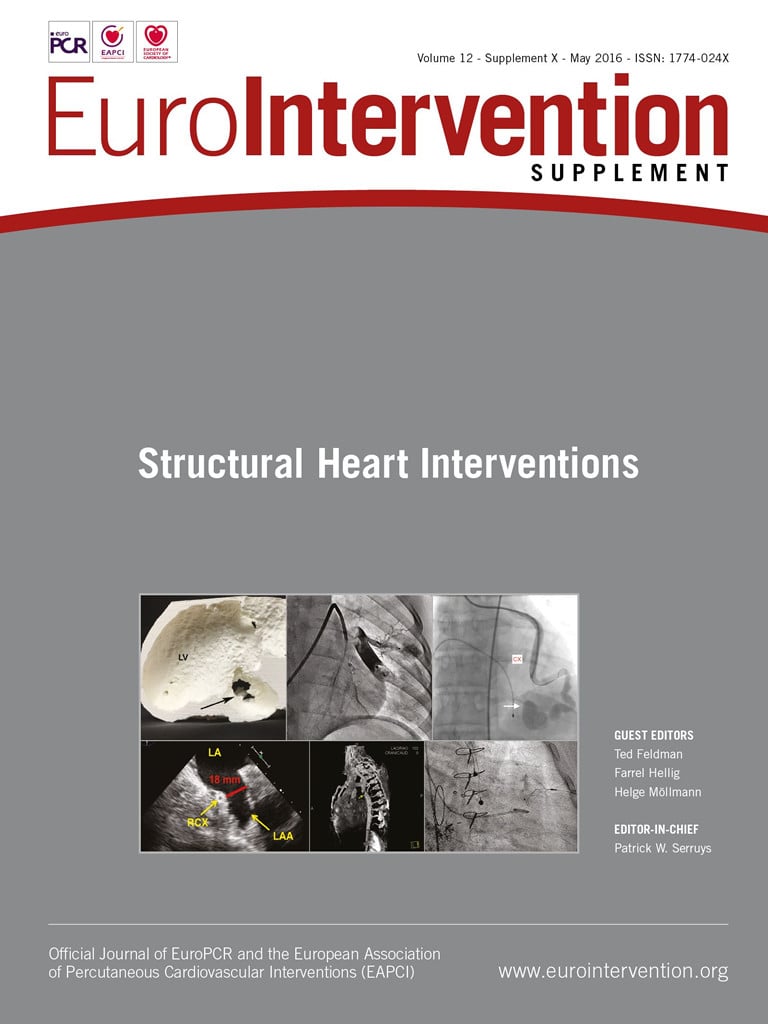The field of structural interventional therapies is in constant and rapid evolution. While for many years this growth was driven by transcatheter valve implantations (TAVI), today a “broad and diverse” family of structural interventional therapies is emerging, benefiting from improvements in technology, procedural techniques and imaging. In order to keep abreast of these advances and innovations, as well as the enlarged therapeutic options they offer our patients, we are pleased to bring you this special dedicated supplement of EuroIntervention.
In the following pages, our select group of internationally recognised experts offer their insights on some of the most important current trends and innovations, detailing in-depth reviews and practical approaches to many of the therapies in the structural arena. The state of the art in closure therapy for patent foramen ovale (PFO), complicated atrial septal defects (ASD) and management of post-myocardial infarction ventricular septal defects (VSD) are reviewed. Left atrial appendage (LAA) closure in atrial fibrillation and the complex technical challenges of paravalvular leak closure and fistula closure are explored. Note the special section on “imaging in structural heart disease”, focusing on the critical role of new imaging modalities for procedure planning and guidance. The evolution in percutaneous haemodynamic support, and the balance between the level of support and procedural invasiveness, is examined.
The therapeutic challenges of obstructive syndromes are reviewed in detail as primary problems in hypertrophic obstructive cardiomyopathy (HOCM), secondary to thromboses in the case of chronic thromboembolic pulmonary hypertension (CTEPH) or iatrogenic with pulmonary vein stenoses after ablation for atrial fibrillation. While surgery has been useful in some subgroups of patients suffering from these diseases, interventional approaches are now developing and are useful alternatives to surgery, as in the case of HOCM, or are opening the door to previously unmet medical needs in patients with CTEPH affecting the intermediate and smaller pulmonary vessels.
With an increase in the ageing population, there is a constant influx of patients with symptoms of severe heart failure. Besides the well-established drug therapies, treatment options for these high-risk patients have been scarce. This supplement focuses on how interventional cardiology may fill the gaps with novel approaches addressing either directly pathological haemodynamic conditions or by mitigating detrimental effects of ventricular remodelling. This field of heart failure interventional therapy may be the newest branch of the interventional armamentarium.
The future of structural interventions is boundless as we see more therapeutic options opening up to our patients. Elderly and high-risk patients with comorbidities were the initial focus of these treatments, but, as the discipline grows and technology advances, we see more and more patients becoming eligible for these life-changing therapies. Complementary to surgery, the techniques described offer therapeutic options to many patients who have, until now, remained untreated. It is a field that has clearly sparked the imagination of innovators and clinicians and the EuroIntervention special supplement on structural heart is dedicated to ensuring that knowledge and practice are propagated in such a way as to inform specialists and improve patient care. As Patrick W. Serruys, Editor in Chief of EuroIntervention, explains, this special edition “reflects the state of the art in structural interventional therapies today as well as a glimpse into the future of this discipline which is the cornerstone of our journal.”

